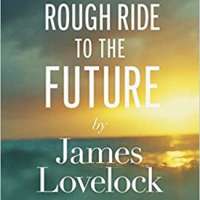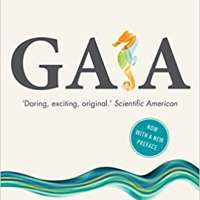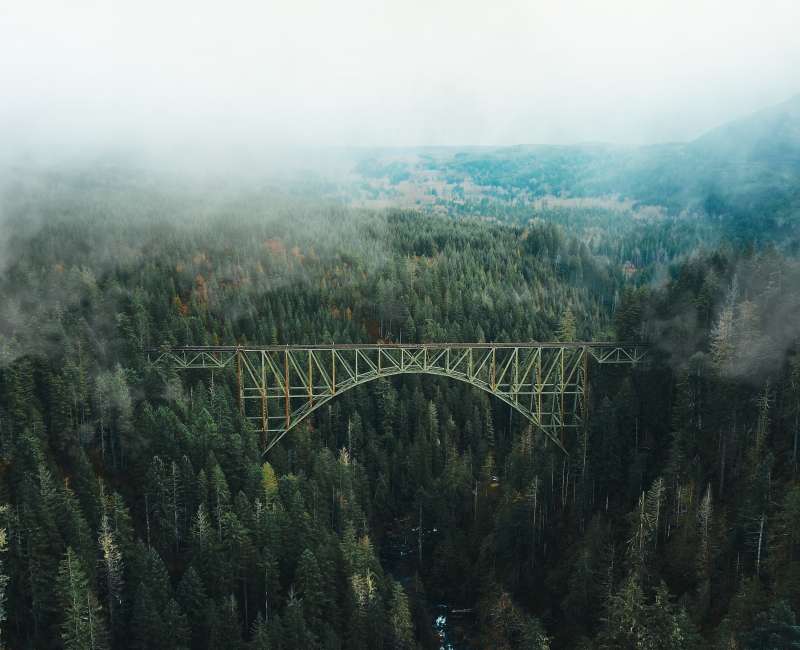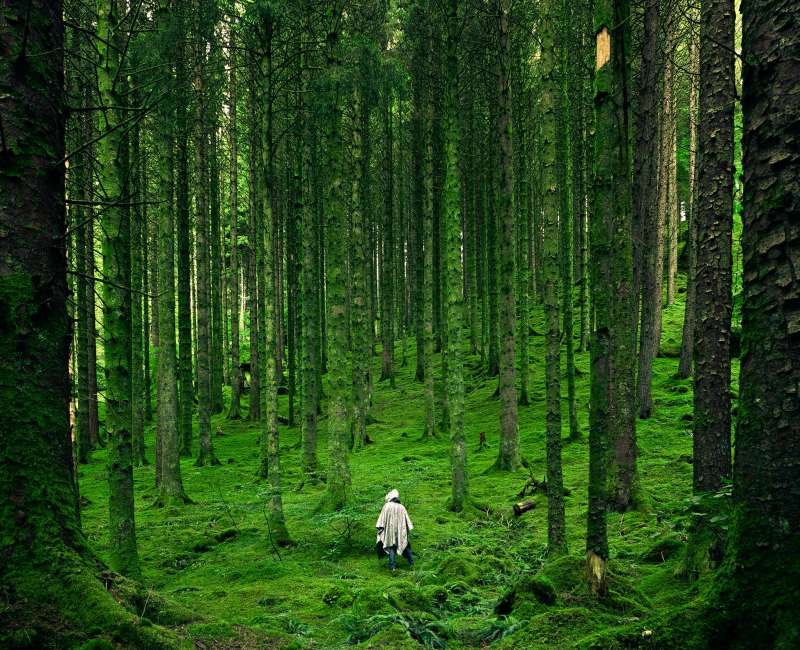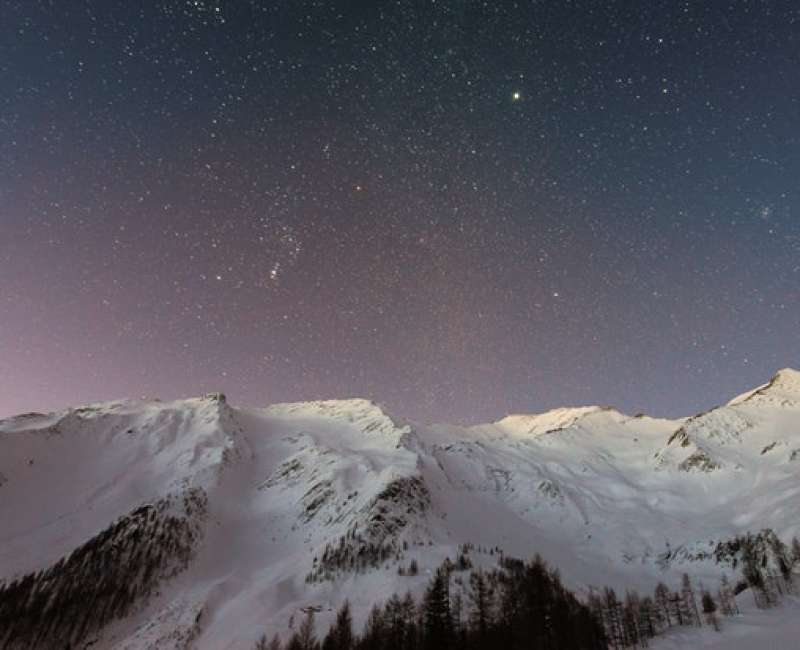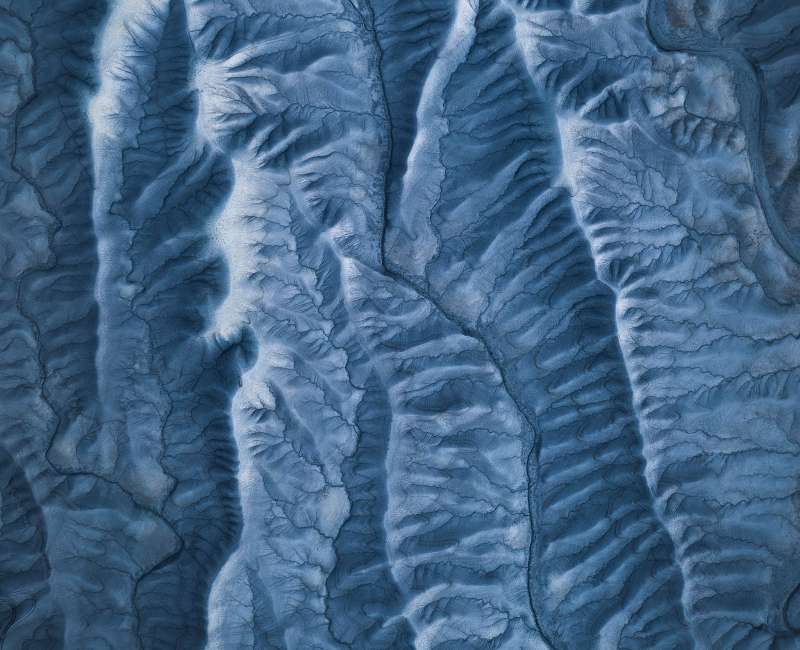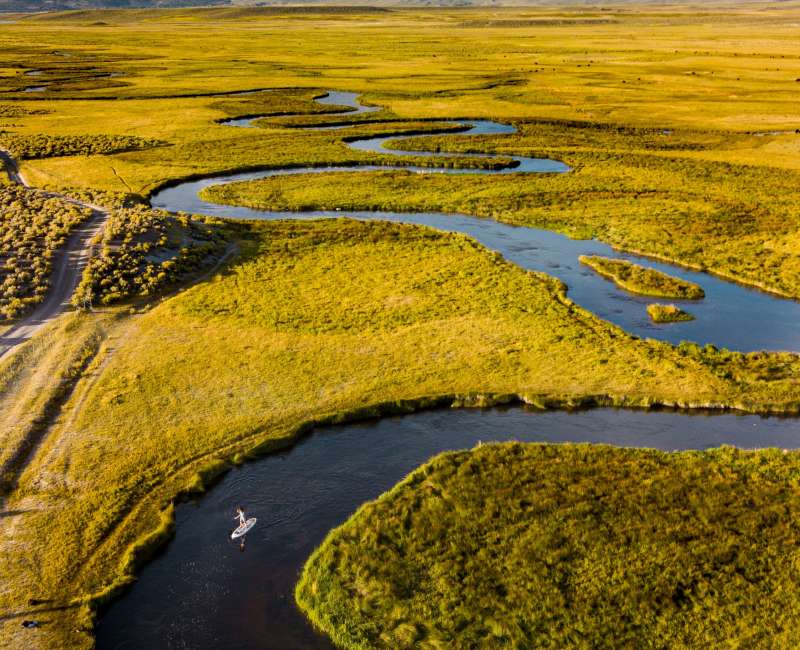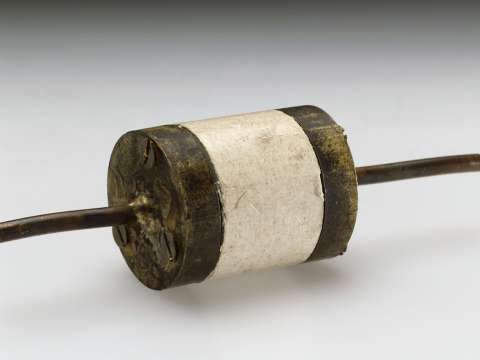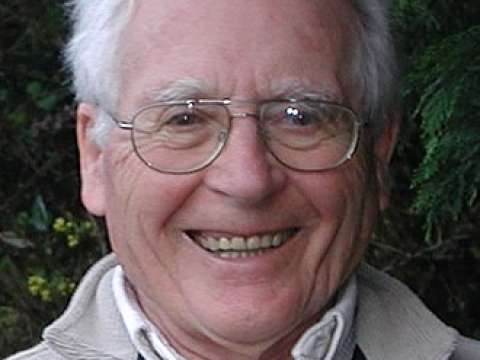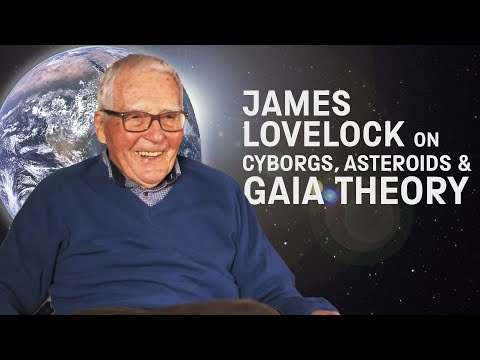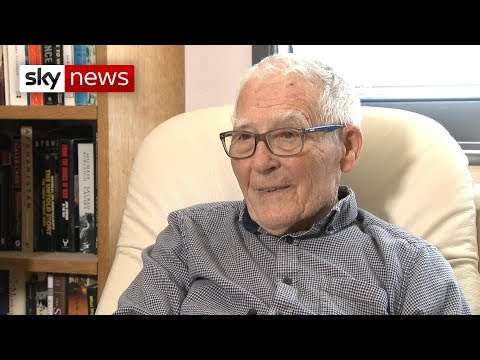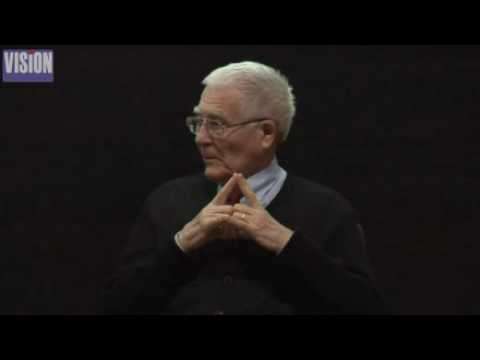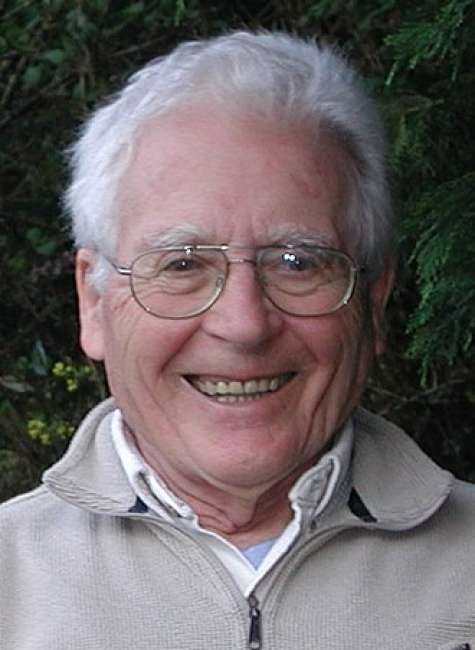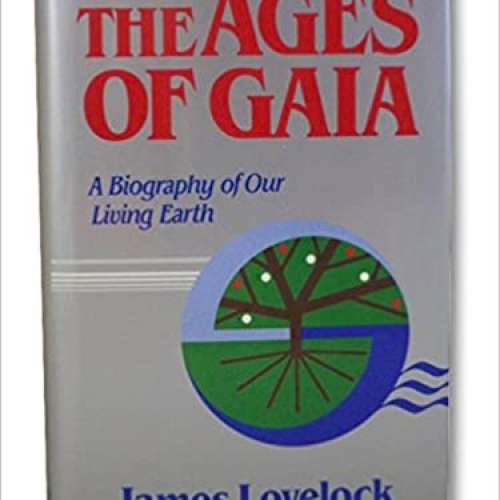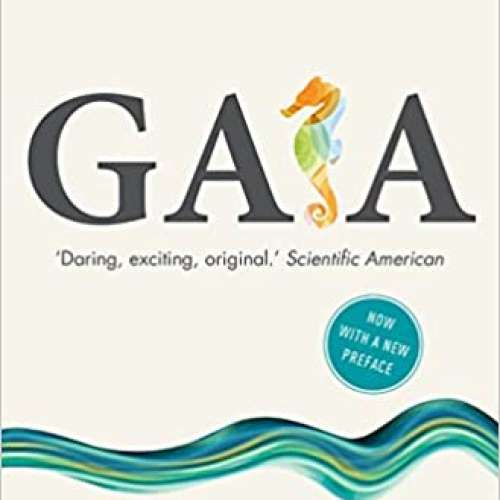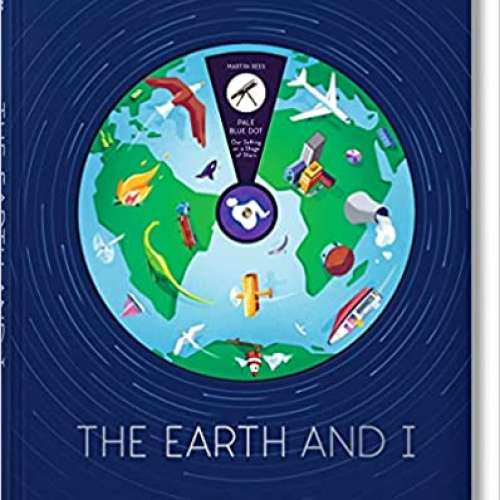

James Lovelock
Sadly, it's much easier to create a desert than a forest.
James Ephraim Lovelock is an English independent scientist, environmentalist and futurist. He is best known for proposing the Gaia hypothesis, which postulates that the Earth functions as a self-regulating system.
With a PhD in medicine, Lovelock began his career performing cryopreservation experiments on rodents, including successfully thawing frozen specimens. His methods were influential in the theories of cryonics the cryopreservation of humans. He invented the electron capture detector, and using it, became the first to detect the widespread presence of CFCs in the atmosphere. While designing scientific instruments for NASA, he developed the Gaia hypothesis.
In the 2000s, he proposed a method of climate engineering to restore carbon dioxide-consuming algae. He has been an outspoken member of Environmentalists for Nuclear, asserting that fossil fuel interests have been behind opposition to nuclear energy, citing the effects of carbon dioxide as being more harmful to the environment, and warning of global warming due to the greenhouse effect. He has written several environmental science books based upon the Gaia hypothesis since the late 1970s.
Early life and education
James Lovelock was born in Letchworth Garden City to Tom Arthur Lovelock 1873–1957 and his second wife Nellie Annie Elizabeth née March 1887–1980. Nell, his mother, won a scholarship to a grammar school but was unable to take it up, and started work at 13 in a pickle factory. His father, Tom, had served six months hard labour for poaching in his teens and was illiterate until attending technical college, and later ran a book shop. The family moved to London, where Lovelock's dislike of authority made him, by his own account, an unhappy pupil at Strand School.
Lovelock could not at first afford to go to university, something which he believes helped prevent him becoming overspecialised and aided the development of Gaia theory.
Career
After leaving school Lovelock worked at a photography firm, attending Birkbeck College during the evenings, before being accepted to study chemistry at the University of Manchester, where he was a student of the Nobel Prize laureate Professor Alexander Todd. Lovelock worked at a Quaker farm before a recommendation from his professor led to him taking up a Medical Research Council post, working on ways of shielding soldiers from burns. Lovelock refused to use the shaved and anaesthetised rabbits that were used as burn victims, and exposed his own skin to heat radiation instead, an experience he describes as "exquisitely painful". His student status enabled temporary deferment of military service during the Second World War, but he registered as a conscientious objector. He later abandoned his conscientious objection in the light of Nazi atrocities, and tried to enlist in the armed forces, but was told that his medical research was too valuable for the enlistment to be approved.
In 1948, Lovelock received a PhD degree in medicine at the London School of Hygiene and Tropical Medicine. He spent the next two decades working at London's National Institute for Medical Research. In the United States, he has conducted research at Yale, Baylor College of Medicine, and Harvard University.
In the mid-1950s, Lovelock experimented with the cryopreservation of rodents, determining that hamsters could be frozen with 60% of the water in the brain crystallized into ice with no adverse effects recorded. Other organs were shown to be susceptible to damage. The results were influential in the theories of cryonics.
A lifelong inventor, Lovelock has created and developed many scientific instruments, some of which were designed for NASA in its planetary exploration program. It was while working as a consultant for NASA that Lovelock developed the Gaia hypothesis, for which he is most widely known.

In early 1961, Lovelock was engaged by NASA to develop sensitive instruments for the analysis of extraterrestrial atmospheres and planetary surfaces. The Viking program, which visited Mars in the late 1970s, was motivated in part to determine whether Mars supported life, and many of the sensors and experiments that were ultimately deployed aimed to resolve this issue. During work on a precursor of this program, Lovelock became interested in the composition of the Martian atmosphere, reasoning that many life forms on Mars would be obliged to make use of it and, thus, alter it. However, the atmosphere was found to be in a stable condition close to its chemical equilibrium, with very little oxygen, methane, or hydrogen, but with an overwhelming abundance of carbon dioxide. To Lovelock, the stark contrast between the Martian atmosphere and chemically dynamic mixture of the Earth's biosphere was strongly indicative of the absence of life on Mars. However, when they were finally launched to Mars, the Viking probes still searched unsuccessfully for extant life there. Further experiments to search for life on Mars have been carried out by further space probes, for instance by NASA'S Curiosity Rover which landed in 2012.
Lovelock had invented the electron capture detector, which ultimately assisted in discoveries about the persistence of CFCs and their role in stratospheric ozone depletion. After studying the operation of the Earth's sulphur cycle, Lovelock and his colleagues, Robert Jay Charlson, Meinrat Andreae and Stephen G. Warren developed the CLAW hypothesis as a possible example of biological control of the Earth's climate.
Lovelock was elected a Fellow of the Royal Society in 1974. He served as the president of the Marine Biological Association MBA from 1986 to 1990, and has been an Honorary Visiting Fellow of Green Templeton College, Oxford formerly Green College, Oxford since 1994.
As an independent scientist, inventor, and author, Lovelock worked out of a barn-turned-laboratory he called his "experimental station" located in a wooded valley on the Devon/Cornwall border in South West England.
In 1988 he made an extended appearance on the Channel 4 television programme After Dark, alongside Heathcote Williams and Petra Kelly, among others.
On 8 May 2012, he appeared on the Radio Four series The Life Scientific, talking to Jim al-Khalili about the Gaia hypothesis. On the programme, he mentioned how his ideas had been received by various people, including Jonathan Porritt. He also mentioned how he had a claim for inventing the microwave oven. He later explained this claim in an interview with The Manchester Magazine. Lovelock said that he did create an instrument during his time studying causes of damage to living cells and tissue, which had, according to him, "almost everything you would expect in an ordinary microwave oven". He invented the instrument for the purpose of heating up frozen hamsters in a way that caused less suffering to the animals, as opposed to the traditional way which involved putting red hot spoons on the animals' chest to heat them up. He believes that at the time, nobody had gone that far and made an embodiment of an actual microwave oven. However, he does not claim to have been the first person to have the idea of using microwaves for cooking.
CFCs
After the development of his electron capture detector, in the late 1960s, Lovelock was the first to detect the widespread presence of CFCs in the atmosphere. He found a concentration of 60 parts per trillion of CFC-11 over Ireland and, in a partially self-funded research expedition in 1972, went on to measure the concentration of CFC-11 from the northern hemisphere to the Antarctic aboard the research vessel RRS Shackleton. He found the gas in each of the 50 air samples that he collected but, not realising that the breakdown of CFCs in the stratosphere would release chlorine that posed a threat to the ozone layer, concluded that the level of CFCs constituted "no conceivable hazard". He has since stated that he meant "no conceivable toxic hazard".

However, the experiment did provide the first useful data on the ubiquitous presence of CFCs in the atmosphere. The damage caused to the ozone layer by the photolysis of CFCs was later discovered by Sherwood Rowland and Mario Molina. After hearing a lecture on the subject of Lovelock's results, they embarked on research that resulted in the first published paper that suggested a link between stratospheric CFCs and ozone depletion in 1974 for which Sherwood and Molina later shared the 1995 Nobel Prize in Chemistry with Paul Crutzen.
Gaia hypothesis
Drawing from the research of Alfred C. Redfield and G. Evelyn Hutchinson, Lovelock first formulated the Gaia hypothesis in the 1960s resulting from his work for NASA concerned with detecting life on Mars. The hypothesis proposes that living and non-living parts of the Earth form a complex interacting system that can be thought of as a single organism. Named after the Greek goddess Gaia at the suggestion of novelist William Golding, the hypothesis postulates that the biosphere has a regulatory effect on the Earth's environment that acts to sustain life.
While the hypothesis was readily accepted by many in the environmentalist community, it has not been widely accepted within the scientific community as a whole. Among its most prominent critics were the evolutionary biologists Richard Dawkins, Ford Doolittle, and Stephen Jay Gould, a convergence of opinion among a trio whose views on other scientific matters often diverged. These and other critics have questioned how natural selection operating on individual organisms can lead to the evolution of planetary-scale homeostasis.

In response to this Lovelock, together with Andrew Watson, published the computer model Daisyworld in 1983, that postulated a hypothetical planet orbiting a star whose radiant energy is slowly increasing or decreasing. In the non-biological case, the temperature of this planet simply tracks the energy received from the star. However, in the biological case, ecological competition between "daisy" species with different albedo values produces a homeostatic effect on global temperature. When energy received from the star is low, black daisies proliferate since they absorb a greater fraction of the heat, but when energy input is high, white daisies predominate since they reflect excess heat. As the white and black daisies have contrary effects on the planet's overall albedo and temperature, changes in their relative populations stabilise the planet's climate and to keep temperature within an optimal range despite fluctuations in energy from the star. Lovelock argued that Daisyworld, although a parable, illustrates how conventional natural selection operating on individual organisms can still produce planetary-scale homeostasis.
In Lovelock's 2006 book, The Revenge of Gaia, he argues that the lack of respect humans have had for Gaia, through the damage done to rainforests and the reduction in planetary biodiversity, is testing Gaia's capacity to minimize the effects of the addition of greenhouse gases in the atmosphere. This eliminates the planet's negative feedbacks and increases the likelihood of homeostatic positive feedback potential associated with runaway global warming. Similarly the warming of the oceans is extending the oceanic thermocline layer of tropical oceans into the Arctic and Antarctic waters, preventing the rise of oceanic nutrients into the surface waters and eliminating the algal blooms of phytoplankton on which oceanic food chains depend. As phytoplankton and forests are the main ways in which Gaia draws down greenhouse gases, particularly carbon dioxide, taking it out of the atmosphere, the elimination of this environmental buffering will see, according to Lovelock, most of the earth becoming uninhabitable for humans and other life-forms by the middle of this century, with a massive extension of tropical deserts. In 2012, Lovelock distanced himself from these conclusions, saying he had "gone too far" in describing the consequences of climate change over the next century in this book.
In his 2009 book, The Vanishing Face of Gaia, he rejects scientific models that disagree with the findings that sea levels are rising and Arctic ice is melting faster than the models predict. He suggests that we may already be beyond the tipping point of terrestrial climate resilience into a permanently hot state. Given these conditions, Lovelock expects human civilization will be hard-pressed to survive. He expects the change to be similar to the Paleocene–Eocene Thermal Maximum when atmospheric concentration of CO2 was 450 ppm, and the temperature of the Arctic Ocean was 23 °C.
Nuclear power
Lovelock has become concerned about the threat of global warming from the greenhouse effect. In 2004 he caused a media sensation when he broke with many fellow environmentalists by pronouncing that "only nuclear power can now halt global warming". In his view, nuclear energy is the only realistic alternative to fossil fuels that has the capacity to both fulfill the large scale energy needs of humankind while also reducing greenhouse emissions. He is an open member of Environmentalists for Nuclear Energy.
In 2005, against the backdrop of renewed UK government interest in nuclear power, Lovelock again publicly announced his support for nuclear energy, stating, "I am a Green, and I entreat my friends in the movement to drop their wrongheaded objection to nuclear energy". Although these interventions in the public debate on nuclear power are recent, his views on it are longstanding. In his 1988 book The Ages of Gaia he states:
I have never regarded nuclear radiation or nuclear power as anything other than a normal and inevitable part of the environment. Our prokaryotic forebears evolved on a planet-sized lump of fallout from a star-sized nuclear explosion, a supernova that synthesised the elements that go to make our planet and ourselves.
In The Revenge of Gaia 2006, where he puts forward the concept of sustainable retreat, Lovelock writes:
A television interviewer once asked me, "But what about nuclear waste? Will it not poison the whole biosphere and persist for millions of years?" I knew this to be a nightmare fantasy wholly without substance in the real world... One of the striking things about places heavily contaminated by radioactive nuclides is the richness of their wildlife. This is true of the land around Chernobyl, the bomb test sites of the Pacific, and areas near the United States' Savannah River nuclear weapons plant of the Second World War. Wild plants and animals do not perceive radiation as dangerous, and any slight reduction it may cause in their lifespans is far less a hazard than is the presence of people and their pets... I find it sad, but all too human, that there are vast bureaucracies concerned about nuclear waste, huge organisations devoted to decommissioning power stations, but nothing comparable to deal with that truly malign waste, carbon dioxide.
In 2019 Lovelock said he thought difficulties in getting nuclear power going again were due to propaganda, that "the coal and oil business fight like mad to tell bad stories about nuclear", and that "the greens played along with it. There’s bound to have been some corruption there – I’m sure that various green movements were paid some sums on the side to help with propaganda". There is nothing in the published interview to suggest that the interviewer sought or Lovelock offered any evidence to support that serious allegation.
Climate
Writing in the British newspaper The Independent in January 2006, Lovelock argued that, as a result of global warming, "billions of us will die and the few breeding pairs of people that survive will be in the Arctic where the climate remains tolerable" by the end of the 21st century. He has been quoted in The Guardian that 80% of humans will perish by 2100 AD, and this climate change will last 100,000 years. He further predicted, the average temperature in temperate regions would increase by as much as 8 °C and by up to 5 °C in the tropics, leaving much of the world's land uninhabitable and unsuitable for farming, with northerly migrations and new cities created in the Arctic. He predicted much of Europe will have become uninhabitable having turned to desert and Britain will have become Europe's "life-raft" due to its stable temperature caused by being surrounded by the ocean. He suggested that "we have to keep in mind the awesome pace of change and realise how little time is left to act, and then each community and nation must find the best use of the resources they have to sustain civilisation for as long as they can."
In a March 2010 interview with The Guardian newspaper, he said that democracy might have to be "put on hold" to prevent climate change. He continued:
Even the best democracies agree that when a major war approaches, democracy must be put on hold for the time being. I have a feeling that climate change may be an issue as severe as a war. It may be necessary to put democracy on hold for a while.
Statements from 2012 portray Lovelock as continuing his concern over global warming while at the same time criticizing extremism and suggesting alternatives to oil, coal and the green solutions he does not support.
In an April 2012 interview, aired on MSNBC, Lovelock stated that he had been "alarmist", using the words "All right, I made a mistake," about the timing of climate change and noted the documentary An Inconvenient Truth and the book The Weather Makers as examples of the same kind of alarmism. Lovelock still believes the climate to be warming although the rate of change is not as he once thought, he admitted that he had been "extrapolating too far." He believes that climate change is still happening, but it will be felt farther in the future. Of the claims "the science is settled" on global warming he states:
He criticizes environmentalists for treating global warming like a religion.
It just so happens that the green religion is now taking over from the Christian religion.
I don't think people have noticed that, but it's got all the sort of terms that religions use ... The greens use guilt. That just shows how religious greens are. You can’t win people round by saying they are guilty for putting (carbon dioxide) in the air.
In the MSNBC article Lovelock is quoted as proclaiming:
The problem is we don't know what the climate is doing. We thought we knew 20 years ago. That led to some alarmist books – mine included – because it looked clear-cut, but it hasn't happened.
The climate is doing its usual tricks. There’s nothing much really happening yet. We were supposed to be halfway toward a frying world now.
The world has not warmed up very much since the millennium. Twelve years is a reasonable time ... it (the temperature) has stayed almost constant, whereas it should have been rising – carbon dioxide is rising, no question about that.
In a follow up interview Lovelock stated his support for natural gas; he now favors fracking as a low-polluting alternative to coal. He opposes the concept of "sustainable development", where modern economies might be powered by wind turbines, calling it meaningless drivel. He keeps a poster of a wind turbine to remind himself how much he detests them.
In Novacene 2019 Lovelock proposes that benevolent superintelligence may take over and save the ecosystem, and states that the machines will need to keep organic life around to keep the planet's temperature habitable for electronic life. On the other hand, if instead life becomes entirely electronic, "so be it: we played our part and newer, younger actors are already appearing on stage".
Geoengineering
In September 2007, Lovelock and Chris Rapley proposed the construction of ocean pumps to pump water up from below the thermocline to "fertilize algae in the surface waters and encourage them to bloom". The basic idea was to accelerate the transfer of carbon dioxide from the atmosphere to the ocean by increasing primary production and enhancing the export of organic carbon as marine snow to the deep ocean. A scheme similar to that proposed by Lovelock and Rapley is already being independently developed by a commercial company.
The proposal attracted widespread media attention and criticism. Commenting on the proposal, Corinne Le Quéré, a University of East Anglia researcher, said "It doesn’t make sense. There is absolutely no evidence that climate engineering options work or even go in the right direction. I’m astonished that they published this. Before any geoengineering is put to work a massive amount of research is needed – research which will take 20 to 30 years". Other researchers have claimed that "this scheme would bring water with high natural pCO2 levels associated with the nutrients back to the surface, potentially causing exhalation of CO2". Lovelock subsequently said that his proposal was intended to stimulate interest and research would be the next step.
Sustainable retreat
Sustainable retreat is a concept developed by James Lovelock in order to define the necessary changes to human settlement and dwelling at the global scale with the purpose of adapting to global warming and preventing its expected negative consequences on humans.
Lovelock thinks the time is past for sustainable development, and that we have come to a time when development is no longer sustainable. Therefore, we need to retreat. Lovelock states the following in order to explain the concept:
Retreat, in his view, means it's time to start talking about changing where we live and how we get our food; about making plans for the migration of millions of people from low-lying regions like Bangladesh into Europe; about admitting that New Orleans is a goner and moving the people to cities better positioned for the future. Most of all, he says, it's about everybody "absolutely doing their utmost to sustain civilization, so that it doesn't degenerate into Dark Ages, with warlords running things, which is a real danger. We could lose everything that way."
The concept of sustainable retreat emphasized a pattern of resource use that aims to meet human needs with lower levels and/or less environmentally harmful types of resources.
Prizes and other honours
Lovelock was elected a Fellow of the Royal Society in 1974. His nomination reads:
Lovelock has made distinguished contributions to several diverse fields, including a study of the transmission of respiratory infection, and methods of air sterilisation; the role of Ca and other divalent ions in blood clotting; damage to various living cells by freezing, thawing and thermal shock and its prevention by the presence of neutral solutes; methods of freezing and thawing small live animals; methods for preparing sperm for artificial insemination, which have been of major economic importance.
He has invented a family of ionisation detectors for gas chromatography. His electron capture detectors are the most sensitive that have been made and are universally used on pollution problems for residual halogen compounds. He has many inventions, including a gas chromatograph, which will be used to investigate planetary atmospheres. His chromatographic work has led to investigation of blood lipids in various animals, including arteriosclerotic humans. He has made a study of detecting life on other planets by analysis of their atmosphere and extended this to world pollution problems.
His work generally shows remarkable originality, simplicity and ingenuity.
Lovelock has been awarded a number of prestigious prizes including the Tswett Medal 1975, the American Chemical Society Award in Chromatography 1980, the World Meteorological Organization Norbert Gerbier–MUMM Award 1988, the Dr A.H. Heineken Prize for Environmental Sciences 1990 and the Royal Geographical Society Discovery Lifetime award 2001. In 2006 he received the Wollaston Medal, the Geological Society of London's highest award, whose previous recipients include Charles Darwin. Lovelock was appointed a Commander of the Order of the British Empire CBE for services to the study of the Science and Atmosphere in the 1990 New Year Honours and a Member of the Order of the Companions of Honour CH for services to Global Environment Science in the 2003 New Year Honours.
Personal life
Lovelock married Helen Hyslop in 1942, and they had four children and lived together until 1989 when Helen died of multiple sclerosis. He fell in love with his second wife, Sandy, at the age of 73. Lovelock believes that "you would find the life of me and my wife Sandy to be an unusually happy one in simple beautiful but unpretentious surroundings."
Lovelock became a centenarian in 2019.
Portraits of Lovelock
In March 2012, the National Portrait Gallery unveiled a new portrait of Lovelock by British artist Michael Gaskell 2011. The collection also has two photographic portraits by Nick Sinclair 1993 and Paul Tozer 1994. The archive of the Royal Society of Arts has a 2009 image taken by Anne-Katrin Purkiss. Lovelock agreed to sit for sculptor Jon Edgar in Devon during 2007, as part of The Environment Triptych 2008 along with heads of Mary Midgley and Richard Mabey. A bronze head is in the collection of the sitter and the terracotta is in the archive of the artist.
Bibliography
- Lovelock, James 2019. Novacene: The coming age of hyperintelligence. Allen Lane. ISBN 978-0241399361.
- Lovelock, James; et al. 2016. The Earth and I. Taschen. ISBN 978-3-8365-5111-3. Retrieved 30 June 2017.
- Lovelock, James 2014. A Rough Ride to the Future. Allen Lane. ISBN 978-0241004760.
- Lovelock, James 2009. The Vanishing Face of Gaia: A Final Warning: Enjoy It While You Can. Allen Lane. ISBN 978-1-84614-185-0.
- Lovelock, James 2006. The Revenge of Gaia: Why the Earth Is Fighting Back – and How We Can Still Save Humanity. Santa Barbara California: Allen Lane. ISBN 0-7139-9914-4.
- Lovelock, James 2005. Gaia: Medicine for an Ailing Planet. Gaia Books. ISBN 1-85675-231-3.
- Lovelock, James 2000. Homage to Gaia: The Life of an Independent Scientist. Oxford University Press. ISBN 0-19-860429-7. Lovelock's autobiography
- Lovelock, James; et al. 1991. Scientists on Gaia. Cambridge, Mass., USA: MIT Press. ISBN 0-262-19310-8.
- Lovelock, James 2001 . Gaia: The Practical Science of Planetary Medicine. Oxford University Press US. ISBN 0-19-521674-1.
- Lovelock, James 1995 . Ages of Gaia. Oxford University Press. ISBN 0-393-31239-9.
- Lovelock, James; Michael Allaby 1984. The Greening of Mars. Warner Books. ISBN 0-446-32967-3.
- Lovelock, James; Michael Allaby 1983. Great Extinction. Doubleday. ISBN 0-385-18011-X.
- Lovelock, James 2000 . Gaia: A New Look at Life on Earth 3rd ed.. Oxford University Press. ISBN 0-19-286218-9.
- Lovelock, James; Sidney Epton 6 February 1975. "The Quest for Gaia". New Scientist. 65 935: 304. Retrieved 10 April 2014.
More facts
Tswett Medal (1975)
American Chemical Society Award in Chromatography (1980)
Norbert Gerbier–MUMM Award (1988)
Dr A.H. Heineken Prize for Environmental Sciences (1990)
Commander of the Order of the British Empire (1990)
Volvo Environment Prize (1996)
Companion of Honour (2003)
Wollaston Medal (2006)
Arne Naess Chair in Global Justice and the Environment (2007)
Ages of Gaia: A Biography of Our Living Earth
Gaia: A New Look at Life on Earth
James Lovelock: The Earth and I
Beautiful Minds (2010-)
Here to Stay (2009)
Gaia Symphony IV (2001)





